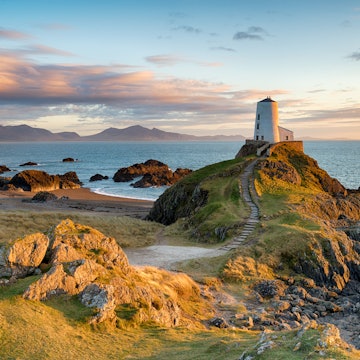
Cornwall’s most beautiful beaches to visit this summer

Jul 9, 2025 • 10 min read
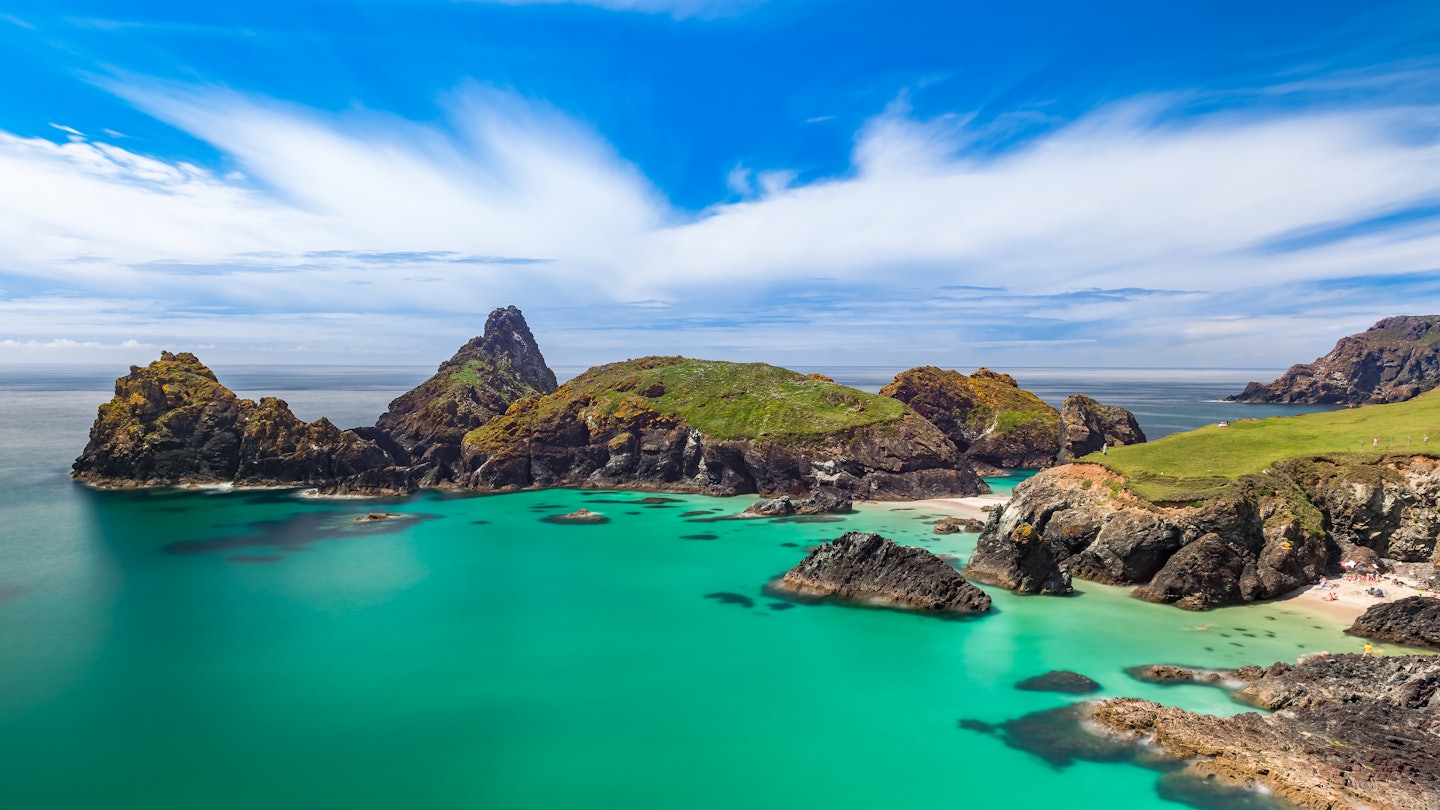
Blue seas and blond sands on the beach in Cornwall. Lukasz Suchocki/Shutterstock
Thinking of taking a trip to Cornwall in England? Don’t forget to pack your bathing suit, bucket and spade. With more than 422 miles (697km) of coastline, Cornwall has some of the best beaches in the country, from family-friendly resort beaches to rugged, empty coves that are perfect for meditative walks.
Cornwall’s reputation for sun, sand and seafood precedes it, so you can expect plenty of company on the sand during the summer high season from May to September. However, it’s still possible to find calmer stretches of sand if you follow the example of locals and detour away from the famous strips of shoreline around St Ives, Penzance and Newquay.
Of course, many favorite beaches are popular for a reason. Newquay’s Fistral Beach would attract a crowd even if there was no sand at all, thanks to the consistently powerful waves that roll in directly off the Atlantic, luring surfers from across the globe.
In total, Cornwall has more than 300 beaches, so it pays to narrow down your search. To help you find your perfect strip of sand, here is our pick of the best beaches in Cornwall.
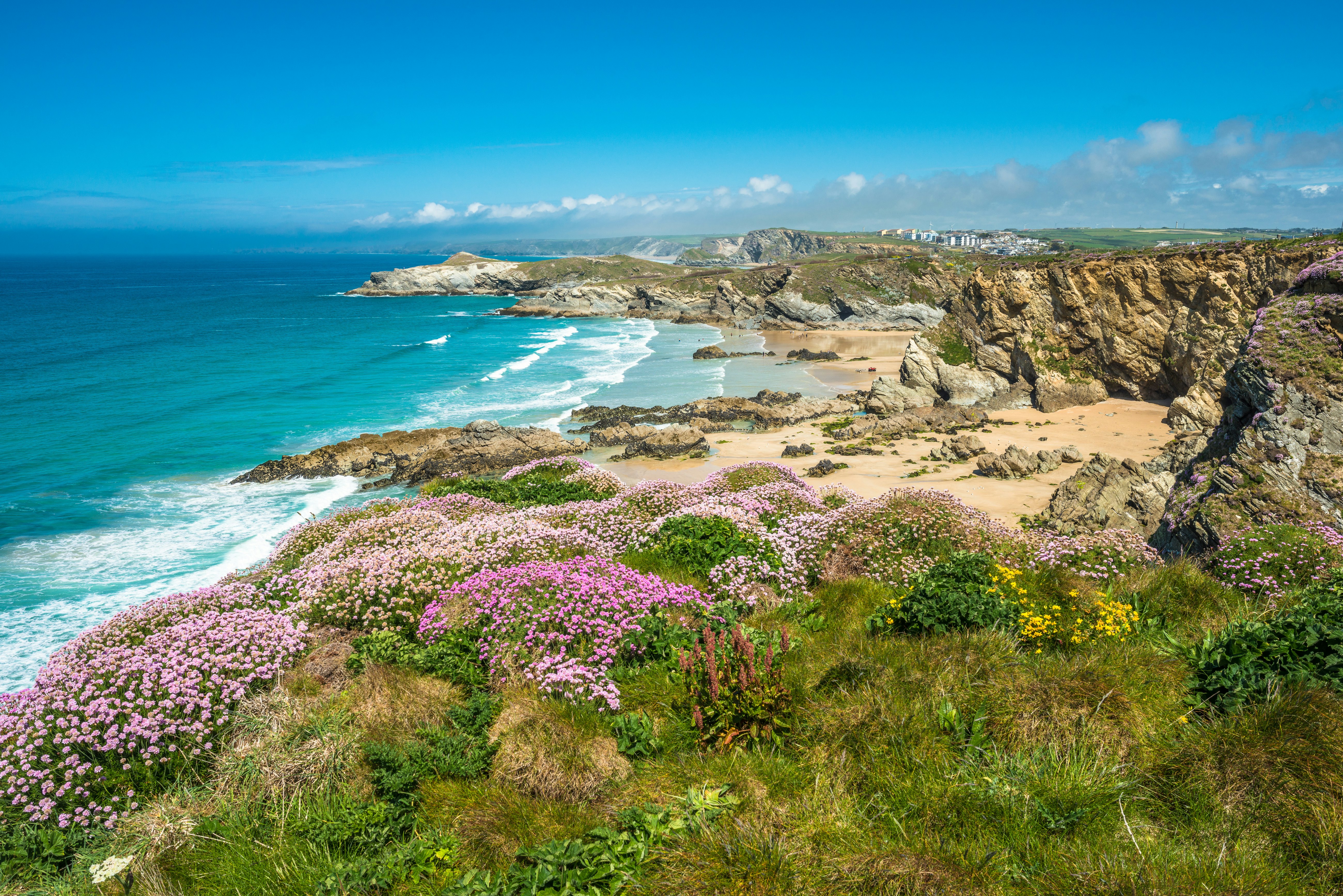
When should I go to the beach in Cornwall?
The weather is warm enough for swimming from late May to early September, and popular beaches are patrolled by lifeguards during these peak months. Still, beaches such as Fistral in Newquay and Porthmeor in St Ives can get very busy, to the extent that overtourism is becoming a major headache for local politicians. Heading to smaller, more remote beaches can get you away from the crowds, and also help distribute the income from tourism more fairly.
Alternatively, visit out of season. As the southernmost county in England, Cornwall warms up earlier than many parts of the country and stays warm for longer. Coming early or late in the season, before or after the busy school summer holidays, can reap dividends. Spring is also a great time to see the shoreline decorated with wildflowers.
For surfers, the best time to visit varies depending on your skill level. The warm summer months are great for beginners, but experienced surfers rate the uncrowded spring swells from March to May, and the powerful waves that roll in from September to November.
The winter months bring enormous waves, but these are for experts only. If you surf in spring or fall, you’ll need a 4/3mm or 5/3mm wetsuit; in winter, you’ll need a 5/4mm or 6/5mm suit, with boots, a hood and gloves.
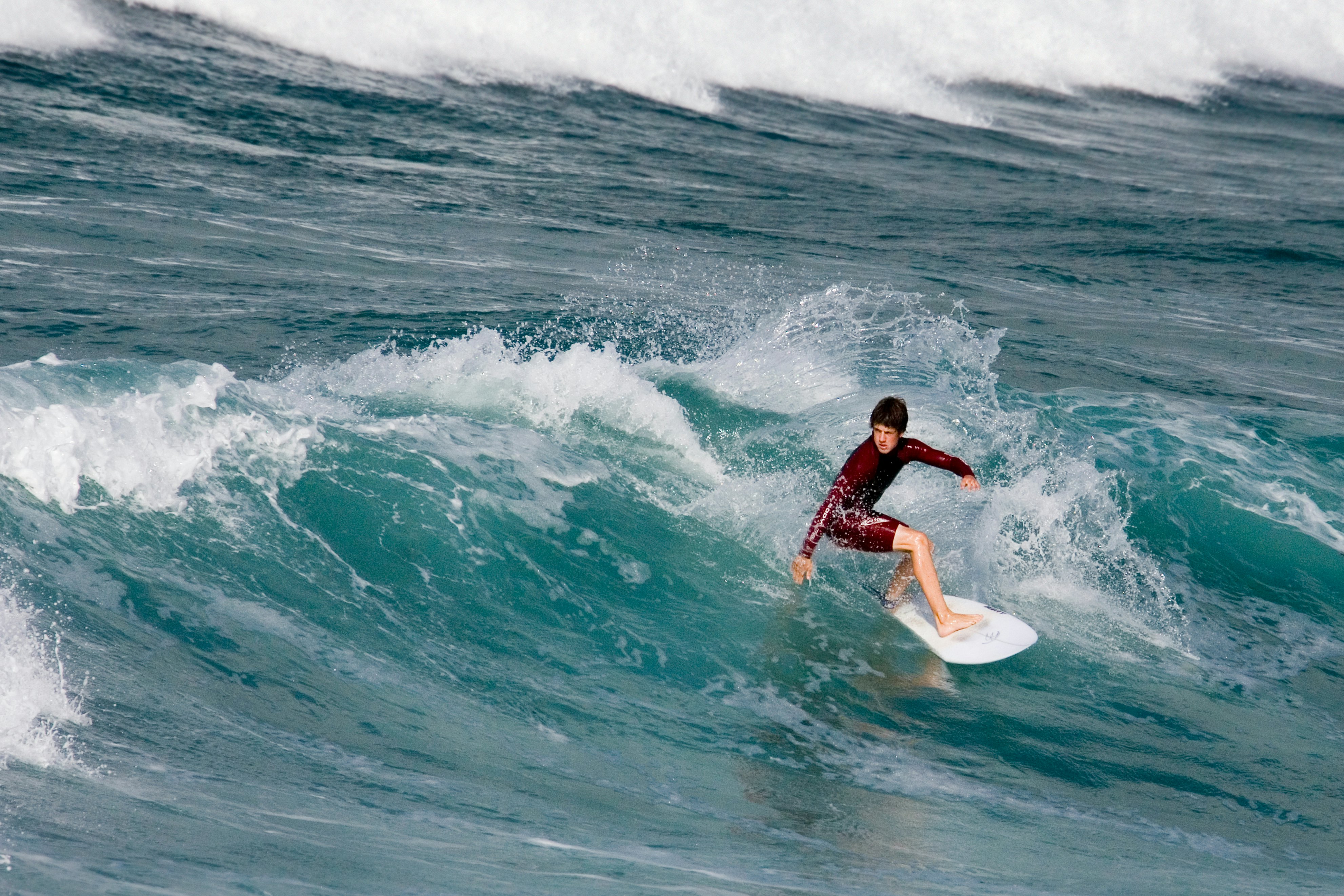
1. Fistral Beach
Best surf beach
Newquay is Cornwall’s surf central, and the beaches here attract droves of surfers, from salt-encrusted old timers to enthusiastic newbies. The crowds can be enormous in summer, but the surf is more powerful in fall and winter. The Atlantic swells here are the most consistent in the UK, and there are scores of surf schools offering group and solo classes for anyone looking to catch their first wave or hone their skills.
On the west side of Newquay, Fistral Beach is the ultimate surf playground. The beach is famous for hollow, barreling waves, which can reach over 10m (33ft) over the legendary Cribbar Reef, but there’s gentler surf for beginners at the south end of the beach. If you need tuition, Fistral Beach Surf School should be able to get you standing up on your first day.
Planning tip: Other well-regarded surf beaches within easy reach of Newquay include Crantock, Holywell Bay and Watergate Bay, home to the popular Wavehunters surf school. In town, Towan is sheltered and good for novices and younger kids. Boards can be rented from surf shacks or surf schools at most of the beaches.
Location: Just west of central Newquay.
Parking: There’s a small, paid parking area by the beach.
Amenities: Lifeguards, surfboard rentals and a surf school. There are plenty of eating options nearby, including Rick Stein’s Fistral and pizza-focused Stable.
Hours: Open 24 hours.
Dog-friendly: Dogs are allowed year-round.
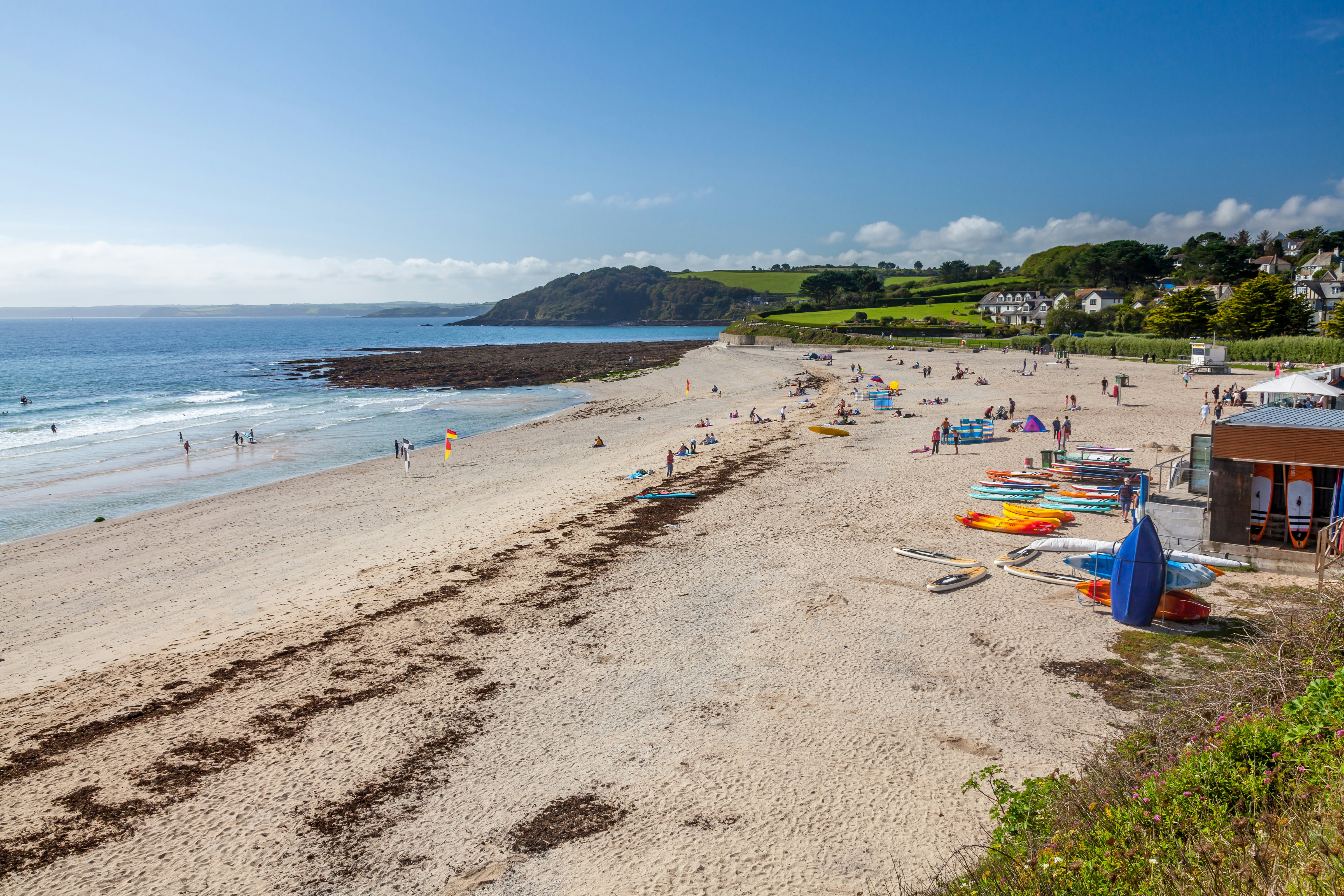
2. Gyllyngvase
Best beach for families
It’s hard to single out just one beach in Cornwall as the best spot for families – family-friendly beach holidays are the region’s specialty. The best Cornish beaches for kids combine easy access with fun holiday resort amenities, and many families rate pretty Gyllyngvase Beach, just a 15-minute walk from downtown Falmouth.
This cozy cove combines gleaming white sand with easy parking, beachside toilets, a park for picnics, good snorkeling at high tide, and the novelty factor of the noon gun booming at nearby Pendennis Castle from Easter through October. The award-winning Gylly Beach Cafe is a handy stop for ice creams or more substantial meals.
If the kids want a break from the sand, you can explore the castle, or rent a motorboat from Falmouth Boat Hire on Custom House Quay to pootle around the estuary of the River Fal (no experience is needed and full tuition is included in the rental cost). Alternatively, take a boat tour with AK Wildlife Cruises to spot birdlife, seals, and even dolphins, porpoises, minke whales and (if you’re lucky) gigantic, harmless basking sharks.
Other family-friendly beaches: The coast of North Cornwall is lined with small seaside resorts that offer a slightly calmer escape than crowded St Ives, though most spots still get busy in the summer. Perranporth merges with neighboring Penhale Sands at low tide, creating a huge strand that’s ideal for making sand castles. Penhale’s grassy dunes are crisscrossed with narrow footpaths that are usually blissfully quiet despite the popular beaches nearby.
Other inviting family beaches on the north coast include Summerleaze in Bude, with its beautiful 1930s tidal pool, and Polzeath, just north of Padstow, with surf for all levels, kiddie-friendly body-boarding, and slightly calmer sands just north at Baby Bay (Pentireglaze Haven).
Planning tip: If you can’t avoid the gravitational pull of St Ives, Carbis Bay is a bit less frenetic than crowded Porthmeor Beach and Harbour Beach in the center.
Location: Gyllyngvase is on the south side of Falmouth.
Parking: Short- and long-stay parking right by the beach.
Amenities: Parking area, accessible toilets, a beach cafe and lifeguards in season.
Hours: Open 24 hours.
Dog-friendly: Dogs are banned from May to September.

3. Padstow’s Seven Bays
Best beaches for foodies
West of the foodie enclave of Padstow – home to such famous restaurants as Rick Stein’s The Seafood Restaurant, Stein’s Fish & Chips and Michelin-starred Paul Ainsworth at No 6 – the north coast of Cornwall is sprinkled with a string of impossibly pretty, golden sandy beaches, known as the Seven Bays. Starting from Padstow and moving southwest, the seven strips are Trevone, Harlyn, Mother Ivey’s, Booby’s, Constantine, Treyarnon and Porthcothan Bay.
Each beach has its own character – Trevone has lifeguards and is good for surfers, and families love its tidal pool. Treyarnon is another family hot spot, with fine sand and rocks to explore at either end. Porthcothan and Harlyn are broad and shallow, and good for toddlers. Booby’s is good for rockpooling, as is Constantine, which also attracts surfers. With limited amenities, Mother Ivey’s offers a quieter experience.
Detour: As an alternative, consider a trip to the glorious, dune-backed white sands of Daymer Bay, a short walk from the village of Rock (accessible by ferry from Padstow across the Camel Estuary).
Location: Near Padstow, North Cornwall
Parking: Most of the beaches have paid car parks, but Booby’s Bay and Mother Ivey’s Bay can only be reached by walking from the next beach over.
Amenities: Varies from beach to beach; there are seasonal lifeguards at Trevone, Treyarnon, Harlyn, Porthcothan, Booby’s and Constantine.
Hours: Open 24 hours.
Dog-friendly: Dogs are allowed, but there are restrictions at Trevone Bay from May to September.
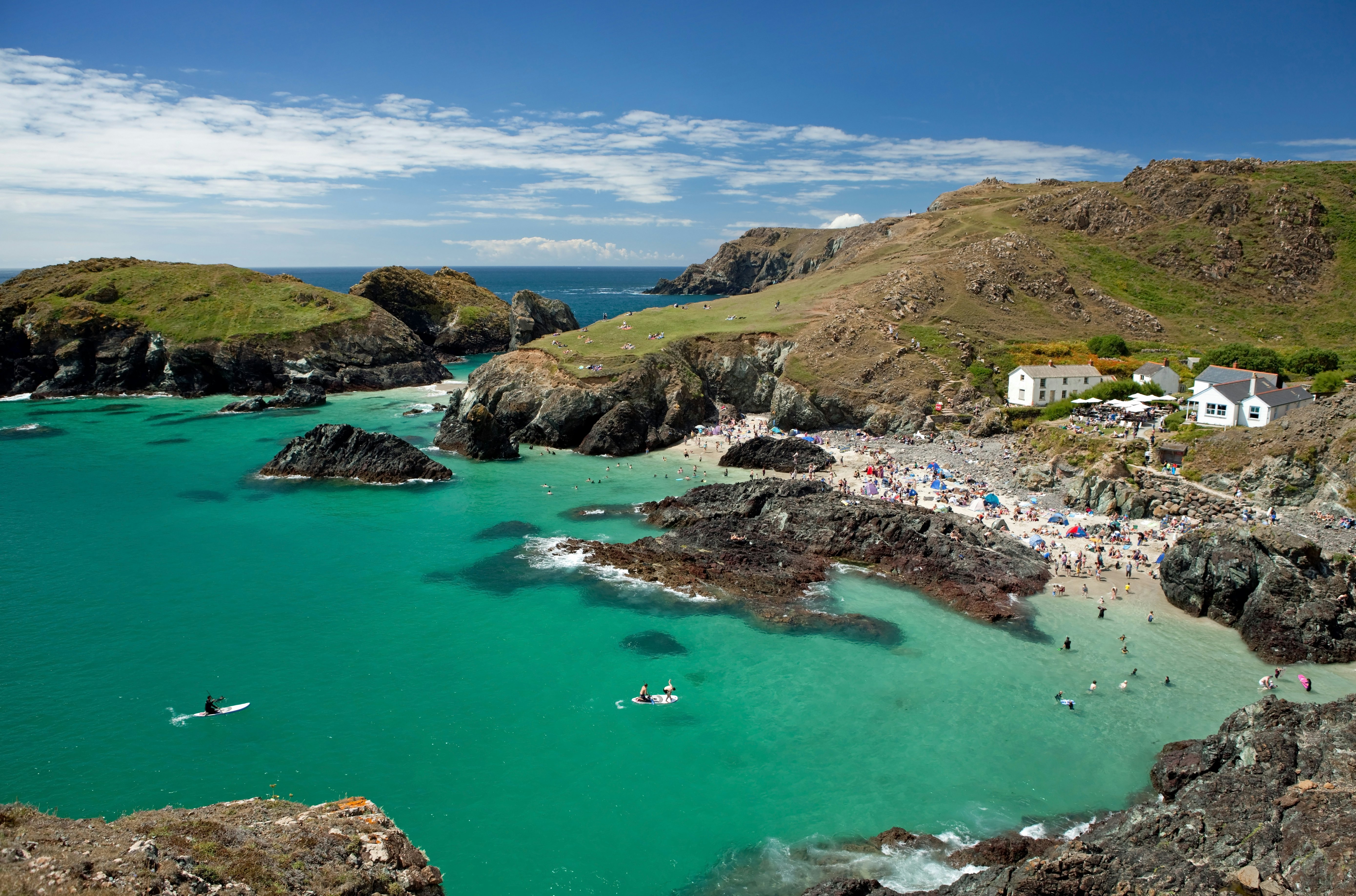
4. Kynance Cove
Best for wild scenery
Nowhere in Cornwall is off the travel radar, but if you come late in the day after the day-trippers have gone home, gorgeous Kynance Cove near Lizard Point has an edge-of-the-world vibe. Administered by the National Trust, this rugged inlet is a scenic showstopper, lined with rock-strewn sands and edged by craggy islands rising out of searingly blue seas that appear almost tropical in hue.
When the sea isn’t too rough, the cove is an exhilarating place for a swim – but take care as currents and waves can be powerful here. Come in spring, winter or fall and the most popular activity is enjoying the blustery breezes and watching the waves crash into rocks, throwing up vast sheets of white spray. The friendly beach cafe here serves pasties, ice creams and a cracking crab sandwich.
Detour: Consider combining a visit to Kynance Cove with the 2.5-mile (4km) hike to or from Lizard Point, following a particularly lovely stretch of the South West Coast Path past classic Poldark scenery.
Location: Lizard Point, near Helston.
Parking: Paid parking area on the cliffs above the beach.
Amenities: Parking area, accessible toilets and beach access via steps or a long paved path. Snacks and meals are available at the Kynance Cove Beach Cafe. No lifeguards.
Hours: Open 24 hours.
Dog-friendly: Dogs are allowed, except from July to August.
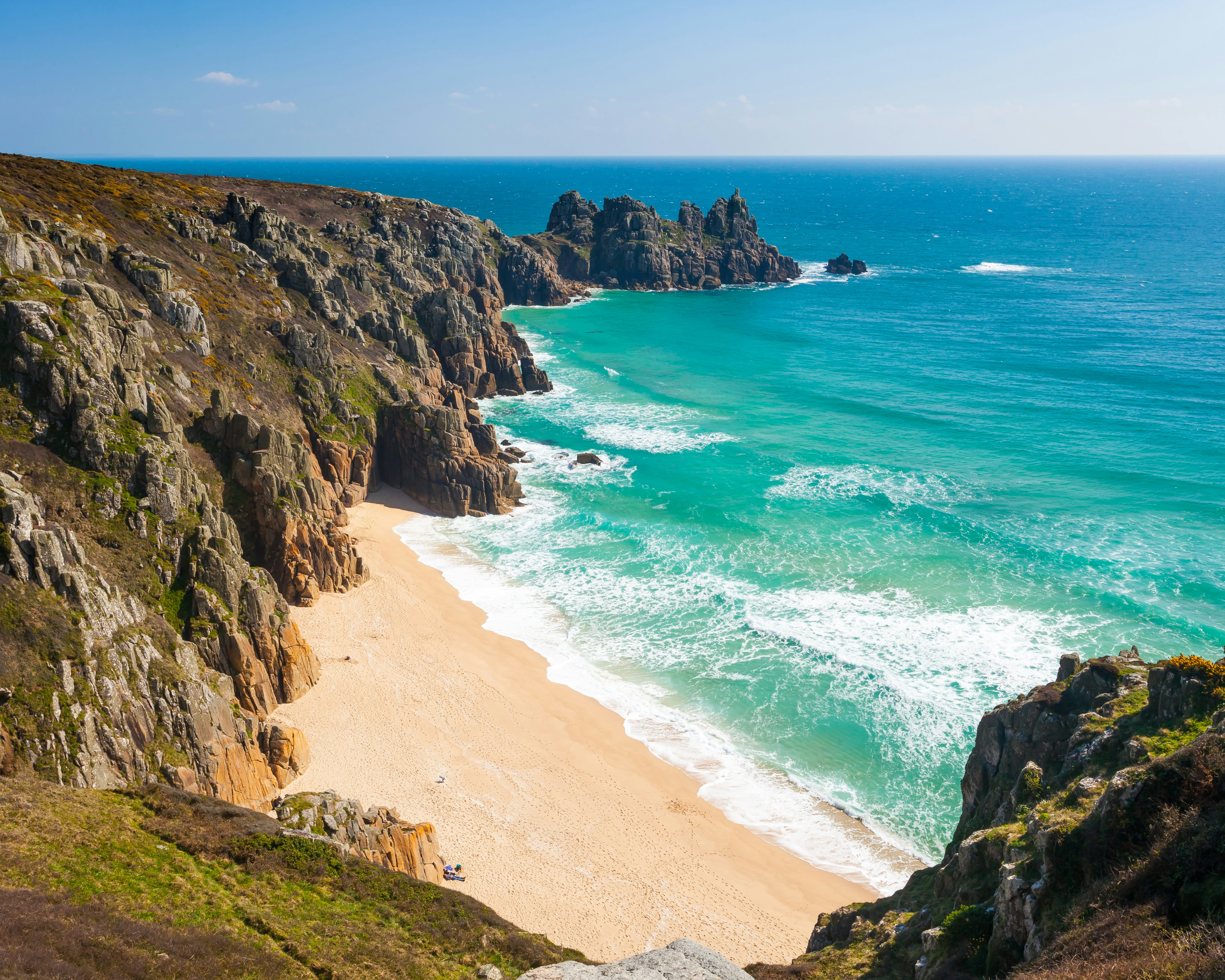
5. Porthcurno and Pedn Vounder
Best beach with a sense of drama
Close to Cornwall’s southwestern tip, Porthcurno Beach is a vision of Cornish perfection, with turquoise waters and rugged cliffs bookending the sand. Many come here to enjoy a beach day followed by a show with an epic backdrop at the Minack, a dramatic rock-hewn amphitheater hosting alfresco performances from March to October (and daytime tours with advance booking).
For extra adventure, come at low tide and walk around the headland east of Porthcurno to reach rock-framed Pedn Vounder (or follow the South West Coast Path along the clifftop and descend via the steep steps). Whichever way you get here, the jewel-bright waters and eroded cliffs make this feel like a secret hideaway. Rumors of a spooky ghost ship seen offshore add an extra touch of theater to the experience.
Location: Porthcurno village.
Parking: There are two paid parking areas in the village.
Amenities: Parking areas and public toilets; food is available in the village, including at the Porthcurno Beach Cafe. There are lifeguards at Porthcurno.
Hours: Open 24 hours.
Dog-friendly: Dogs are allowed, except from July to August.
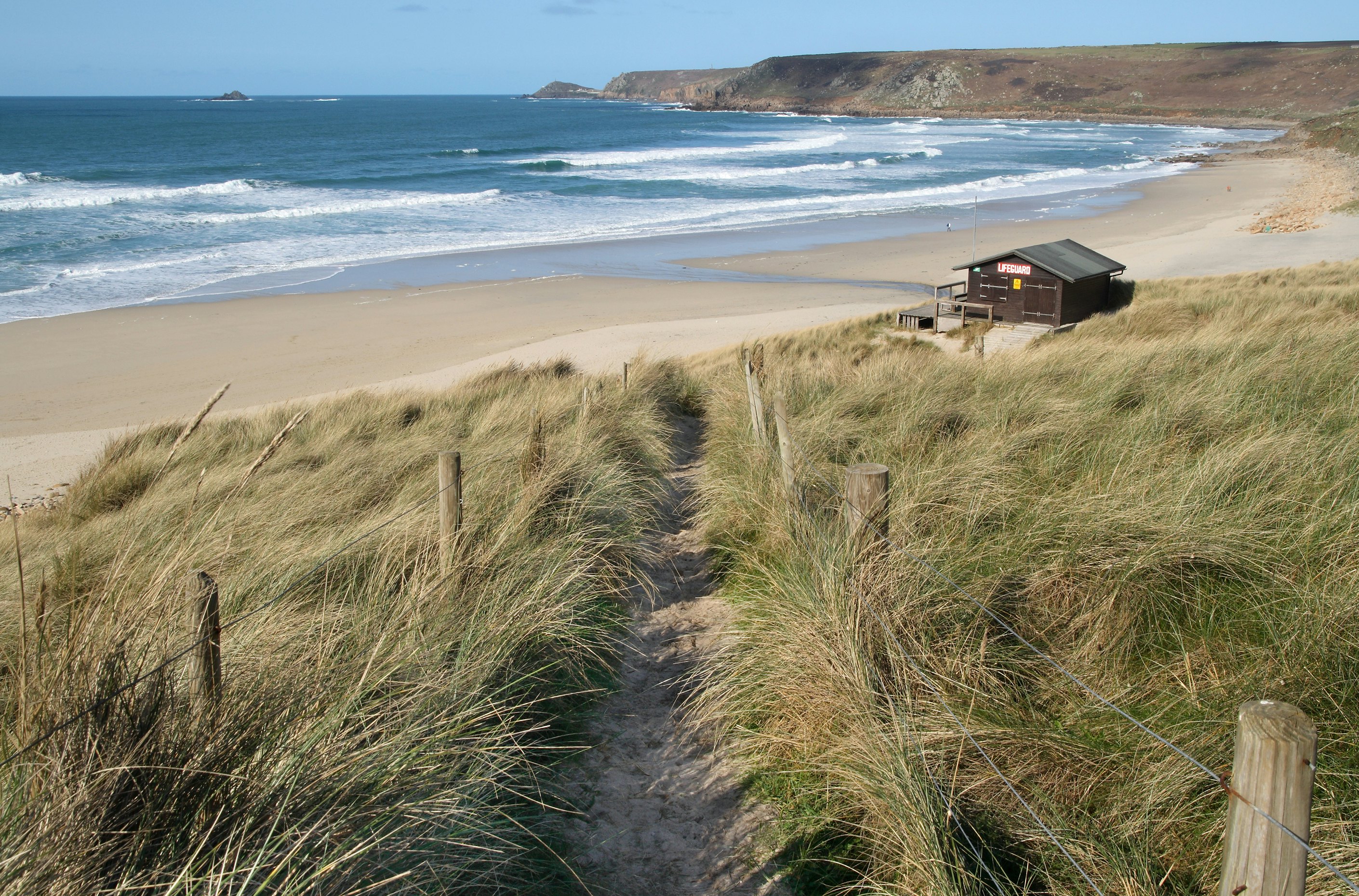
6. Sennen Cove
Best beach for personal space
Just north of Land’s End, the most southwesterly point in mainland Britain, the long golden beach at Sennen Cove is roomy enough that it never feels crowded, even in peak season. The sands spill from a rounded, grassy ridge, and with a car park right at the south end of the beach and a ramp down to the sand, this is one of Cornwall’s most accessible beaches for travelers with limited mobility.
At low tide, you can walk from Sennen to neighboring Gwenver (Gwynver) and then return via the South West Coast Path, which runs just inland. There’s quality surfing here, too. Boards can be hired next to the Sennen Surf Lodge, where you can also grab a tasty meal overlooking the beach, and the Sennen Surfing Centre offers lessons.
Location: About 1.2 miles (1.9km) north of Land’s End.
Parking: Paid parking by the beach at the north end of Sennen village.
Amenities: Parking area, accessible toilets and easy beach access. Surfboard rentals and surf school, plus lifeguards in season.
Hours: Open 24 hours.
Dog-friendly: Dogs are banned from May to September.
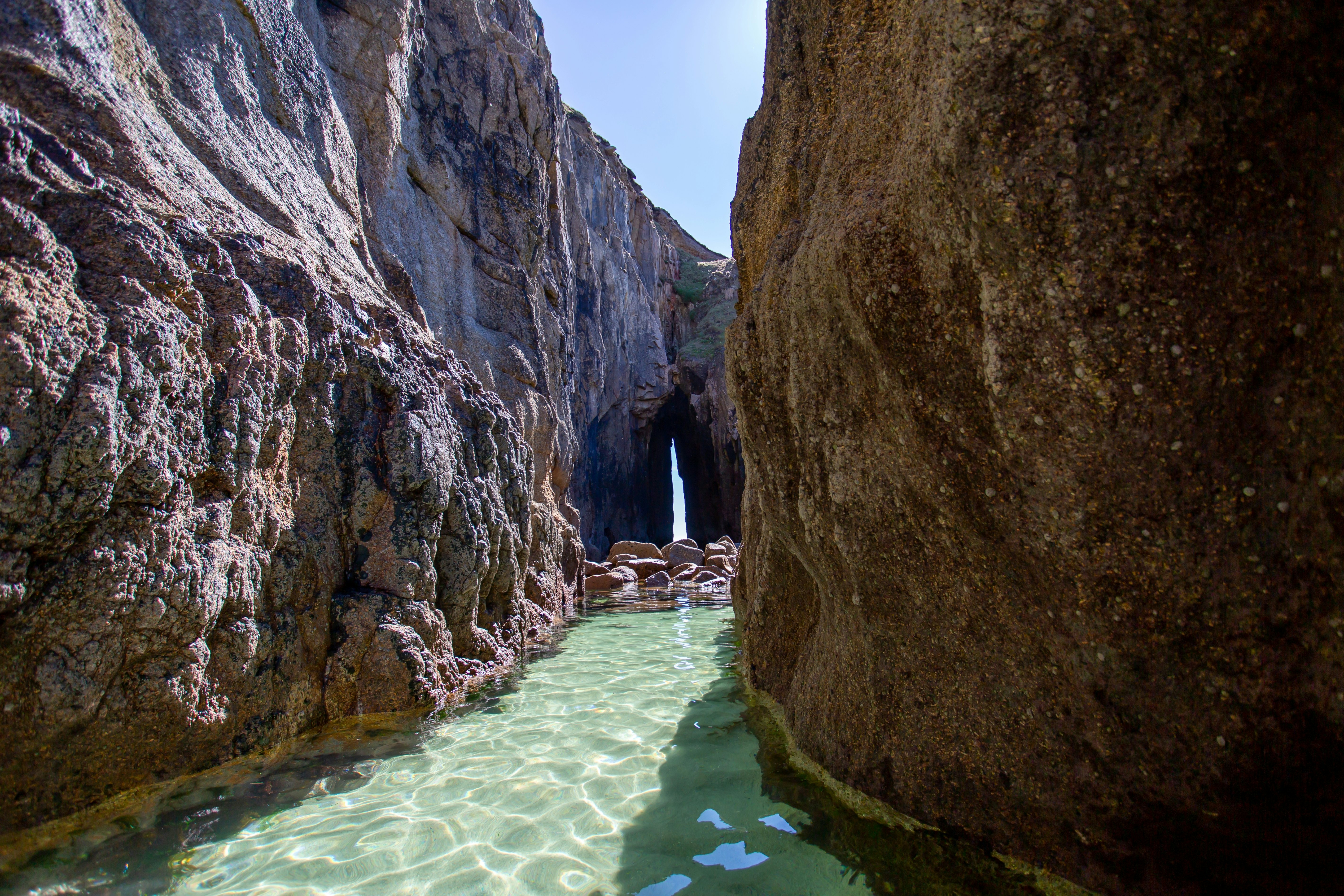
7. Nanjizal Beach
Best secret beach
Ease of access is the main factor governing whether a Cornish beach is crowded or not. While it lies just a few miles from tourist-thronged Land’s End, hidden-away Nanjizal Beach has no amenities or parking, and the only way in is on foot via the South West Coast Path, which keeps things serene.
Set inside a Site of Special Scientific Interest that is rich in birdlife, including rare Cornish choughs, this small spray of sand and boulders is framed by dramatic rock formations. The star attraction is the so-called Song of the Sea – a wave-cut cavern ending in a slit-like rock arch, with a secret pool for swimmers that is accessible at low tide.
Location: About 3 miles (4.8km) southeast of Land’s End.
Parking: There’s no parking; access is on foot via the South West Coast Path.
Amenities: None.
Hours: Open 24 hours.
Dog-friendly: Dogs are allowed year-round.
This article was adapted from Lonely Planet’s England and Devon & Cornwall guidebooks, both published in June 2025.










